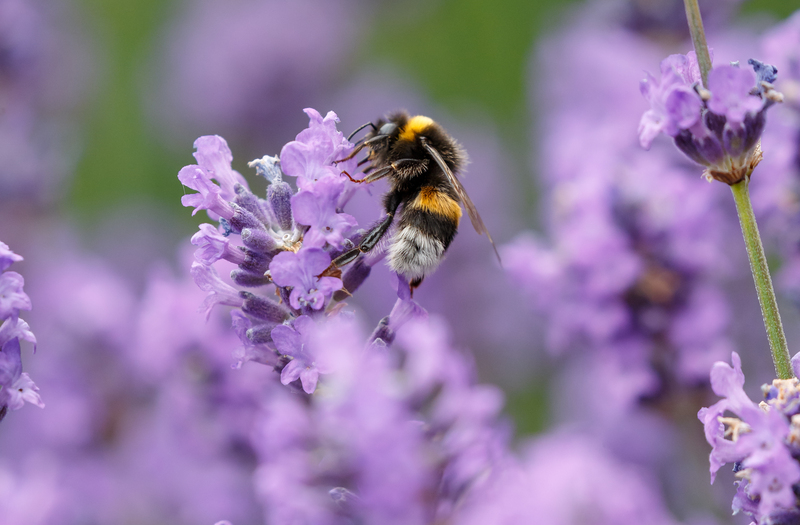How to Shield Your Plants from Icy Winter Conditions
Posted on 31/08/2025
How to Shield Your Plants from Icy Winter Conditions
Winter can be one of the most challenging seasons for gardeners and plant lovers. Plummeting temperatures, frostbite, and wind chill can wreak havoc on plants, whether they're tender houseplants or hardy landscape specimens. Successfully shielding your plants from icy winter conditions involves careful planning and application of various protective strategies. This comprehensive guide will show you not only how to preserve your botanicals during freezing spells but also how to foster their healthy rebound come spring.
Understanding the Challenges of Winter for Plants
Before diving into solutions, it's important to comprehend how winter affects plants:
- Frost can damage or kill foliage, stems, and roots.
- Cold winds can dehydrate plants, especially evergreens.
- The freeze-thaw cycle can cause root heaving, potentially exposing roots to the elements.
- Snow and ice accumulation can break branches or crush small shrubs.
- Lack of sunlight may weaken both indoor and outdoor plants.
Knowing these threats helps you take specific actions to protect your plants during winter and minimize long-term damage.

Choosing the Right Plants for Your Climate
One of the best ways to shield your garden is by selecting species that naturally thrive in your area's winter conditions. Look for the following:
- Hardiness zone ratings that match your region.
- Plants native to your geographic area.
- Varieties proven to withstand your local low temperatures.
Of course, exotic or tropical plants can still be grown, but these will require extra winter plant protection techniques described below.
How to Prepare Plants for Winter: Pre-Winter Readiness
Soil Preparation and Mulching
Good soil health is a foundation for winter plant protection. Here's what to do:
- Loosen compacted soil in autumn to improve drainage and reduce ice build-up.
- Apply mulch (such as shredded leaves, bark, or straw) around the base of perennials and young trees to insulate roots.
Mulching acts as a natural blanket, moderating soil temperature, reducing evaporation, and buffering the roots against sudden cold snaps.
Watering Wisely Before the Freeze
Proper hydration is crucial, as dry plants are more susceptible to cold damage:
- Water deeply in late fall before the ground freezes.
- Avoid overwatering, which can lead to rot if soil remains saturated during freezes.
Healthy, well-hydrated plants withstand winter better and recover faster in spring.
Physical Barriers: Covers, Cloches, and More
Creating physical shields can mean the difference between survival and loss for sensitive plants. Here are the most effective protection methods:
Using Row Covers and Frost Blankets
Row covers and frost blankets are made of lightweight, breathable fabric that you drape directly over your plants:
- Secure them with stones, bricks, or landscape pins to prevent wind from blowing them away.
- Remove covers on sunny days to prevent overheating and increase light exposure.
Fleece, burlap, or horticultural fabric can also be used for more established shrubs and trees to shield them from windburn and abrupt temperature drops.
Portable Greenhouses and Cold Frames
For more long-term and reusable winter plant shielding options, try:
- Cold frames: Simple, bottomless boxes with a transparent lid. Place them over tender seedlings and young plants.
- Mini greenhouses: For individual plants or small groups requiring added warmth and humidity.
These structures offer essential protection from winter chills, keeping temperatures several degrees warmer than ambient outside air.
Cloches and DIY Plant Domes
*Cloches*, or glass/plastic domes, individually cover delicate or young plants. You can also make cloches from plastic bottles with the bottoms cut off-- a cost-effective way to offer plant frost protection!
- Remove cloches during the day to prevent condensation and overheating.
- Place straw, mulch, or leaves around their base to provide additional insulation.
Windbreaks and Shields for Exposed Areas
The wind can cause more harm than the cold itself. For sites open to winter gales:
- Set up burlap screens, fencing, or even hay bales upwind of vulnerable plants.
- Arrange tall potted plants or plant clusters together to reduce direct exposure to wind, which causes desiccation.
Windbreaks are essential for evergreens and broadleaf plants, which continue losing water through their leaves in winter.
Bringing Tender Plants Indoors
When and How to Move Plants Inside
Some plants--like citrus, bananas, or succulents--need more than in-garden shielding. Begin monitoring nighttime temperatures:
- When lows approach 45?F (7?C), prepare to move tropicals and most potted plants inside.
- Before bringing plants in, inspect for pests, prune dead material, and gradually acclimate them to indoor light conditions.
Creating the Right Indoor Environment
Keep your wintered-over plants healthy by:
- Placing near bright, indirect sunlight--south or west-facing windows are best.
- Maintaining moderate room temperatures (between 55-70?F or 13-21?C).
- Avoiding heat sources like radiators or vents, which can dry out foliage.
- Occasionally misting leaves to maintain humidity, especially for tropical species.
Permanent Garden Features for Winter Hardiness
*Some gardens are designed from the start to build in winter resistance*:
- Plant trees and shrubs in groupings for mutual protection.
- Install raised beds for better drainage and earlier soil warming.
- Use stone walls and structures that absorb and radiate heat, moderating temperature extremes.
Strategic garden planning can make it easier to shield your landscape during the coldest months.
Pro Tips for Specific Plant Types
Protecting Roses in Winter
- After the first hard frost, mound mulch or soil eight inches high around the base.
- In harsh climates, use rose cones or wrap plants in burlap stuffed with straw.
- Prune only lightly in autumn; larger cuts are best done in late winter.
Safeguarding Trees and Shrubs
- Wrap trunks of young trees with expandable tree wrap to prevent cracking and sunscald.
- For evergreens, water once per month during late fall and early winter if there's no snow cover.
- Shake off heavy snow from branches to avoid breakage; use a broom gently from below.
Shielding Potted and Container Plants
- Group pots together near your home's southern wall to benefit from radiant heat.
- Insulate containers by wrapping with bubble wrap, towels, or burlap sacks filled with straw.
- Place containers on insulating pads to shield roots from freezing ground.
Protecting Lawns and Perennials
- Cut lawns slightly higher in the fall to encourage deeper root growth.
- Leave perennial stalks and foliage rather than cutting back--old growth insulates crowns and provides habitat for beneficial insects.
- Cover garden beds with 2-4 inches of organic mulch for root insulation.
Common Mistakes to Avoid When Protecting Plants in Winter
- Over-fertilizing in late fall: This stimulates new growth just as plants should be going dormant.
- Sealing covers too tightly: Plants still need ventilation to prevent disease and rot.
- Ignoring late-winter watering: Drought stress can occur even when plants look dormant.
- Using plastic as the only cover: Without air circulation, plastic can trap moisture and cause fungal issues.
Timing Your Plant Protection Efforts
Timing is vital for effective plant frost protection:
- Put covers in place before the first predicted frost, typically late fall.
- Continue to monitor temperatures throughout the season, especially during warm spells when covers may need to be temporarily removed.
- Remove insulation and protective barriers slowly in spring to prevent shock from cold snaps.
Natural Solutions for Winterizing Your Plants
Consider these eco-friendly methods to shield your plants from winter cold:
- Use leaves, pine needles, and straw for mulch instead of synthetic materials.
- Encourage snow cover, which actually acts as an insulating blanket for dormant plants.
- Plant hedges and native trees strategically for long-term wind protection and habitat enhancement.

Emergencies: What To Do If a Sudden Cold Snap Strikes
Sometimes, even expert gardeners get caught off guard. Here's how to quickly protect your plants from unexpected frosts:
- Use old bed sheets, towels, or newspapers to cover tender plants overnight. Remove the next morning.
- Water at the base of plants before a forecasted freeze to add heat-retaining moisture to the soil.
- Move portable pots and baskets to sheltered spots like garages or covered patios.
Conclusion: Embrace the Chill, Protect Your Garden
Shielding your plants from icy winter conditions is an art that blends proactive planning, attentive observation, and resourceful solutions. Implement a combination of mulching, physical covers, strategic plant placement, and careful watering to prepare your garden for even the toughest cold spells. Remember: a robust, healthy plant stands the best chance of surviving winter's icy grip and flourishing come the spring thaw.
For more seasonal garden tips and expert guides on year-round plant protection, explore our related articles below. Winter doesn't have to spell the end for your cherished plants--it can be a time to nurture and prepare them for greater growth ahead!
```
